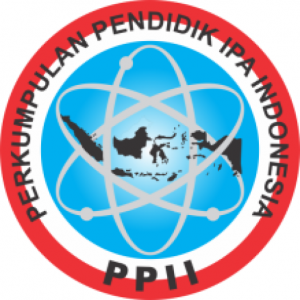Identification of Ornamental Flower Plants in The Blooms Garden Bali as a Learning Resource for High School Biology
Authors
Rachma Kusuma Ningati , Nur Rokhimah HanikDOI:
10.29303/jbt.v25i1.8508Published:
2025-01-30Issue:
Vol. 25 No. 1 (2025): Januari - MaretKeywords:
Biology learning, biodiversity, ornamental plants, plant identification.Articles
Downloads
How to Cite
Downloads
Metrics
Abstract
The Blooms Garden Bali is a tourist attraction featuring various ornamental flowers that can serve as a learning resource for high school biology students. This research aims to identify the ornamental flower species in The Blooms Garden Bali and assess their potential as an educational resource for biodiversity studies. The study employed an exploratory method, involving direct observation and identification of plant species using reference materials and digital tools. Data collection was conducted over five months, from July to November 2024. The results identified 22 ornamental flower species belonging to 14 families and two classes. The findings indicate that these plants can be utilized in biology learning, particularly in biodiversity topics, to enhance students' understanding through real-world applications. The research contributes to the development of interactive learning materials, such as educational presentations and e-modules, aligning with modern digital learning approaches. This study highlights the importance of integrating local biodiversity into biology education, fostering students’ environmental awareness and scientific literacy.
References
Aninda, A, L., Devita, A, R., Difa, I, A., Nana, Y, S., Noviana, P., Indra, F. (2024). Identify the Types of Grass in the Lembah Dieng Area, Malang Regency, East Java. Jurnal Biologi Tropis. Vol. 24(1): 313-321. DOI: https://dx.doi.org/10.29303/jbt.v24i1.6521
Annisa, L, N., Ratih, N, S., Riandi., Ari, W. (2022). Analisis Inovasi Media Gambar Pada Materi Keanekaragaman Hayati Menggunakan Aplikasi Naturalist. Jurnal Ilmiah Pendidikan Biologi. Vol. 8., No. 4:133-138. DOI: https://doi.org/10.22437/bio.v8i4.19115
Arik Arubil, F. (2012). Klasifikasi Genus Anggota Famili Amaranthaceae Berdasarkan Analisis Morfologi dan Molekuler. Universitas Brawijaya. URL: http://repository.ub.ac.id/id/eprint/153086/1/051200202.pdf
Bhavin, A, Suthar., & Rajesh, S, Patel. (2014). A Taxonomic Syudy of Lamiaceae (Mint Family) in Rajpipla (Gujarat, India). World Applied Sciences Journal. Vol. 32(5): 766-768. DOI: https://doi.org/10.5829/idosi.wasj.2014.32.05.14478
Dian, A., Johan, I., Bambang, H, P., Teguh, H. (2019). Taman Keanekaragaman Hayati Hutan Pelawan Sebagai Media Pendidikan Keanekaragaman Hayati Lokal di Provinsi Kepulauan Bangka Belitung. Proceding Biology Education Conference. Vol. 16: 210-218. URL: https://jurnal.uns.ac.id/prosbi/article/view/38361/25392
Diva, T, A., Elsa, N. & Ateng, S. (2023). Inventarisasi Keragaman Famili Asteraceae di Kawasan UIN Sunan Gunung Djati Bandung. Jurnal Riset Rumpun Ilmu Tanaman. Vol. 2., No. 1. DOI: https://doi.org/10.55606/jurrit.v2i1.1465
Eka, P., Rinnanik., Buchori. (2020). Objek Wisata dan Pelaku Usaha (Dampak Pengembangan Objek Wisata Terhadap Ekonomi Masyarakat). Pustaka Aksara. URL: https://osf.io/pvue5/download
Eka, P,Y., Rizki, N., Faoziah, U, F., (2022). Tata Cara Menanam dan Merawat Tanaman Hias Daun Dengan Baik. Abdimas Galuh. Vol. 4., No. 2:1120-1128. URL: https://jurnal.unigal.ac.id/abdimasgaluh/article/view/8261
Ema, A., Cicilia, N, P., & Joko, W. (2017). Kajian Observasi Tanaman Famili Lamiaceae. Prosiding Seminar Nasional Simbiosis. Vol. 2: 469-477. URL: https://www.academia.edu/81506144/KAJIAN_OBSERVASI_TANAMAN_FAMILI_Lamiaceae
Emmi Bessy. (2016). Penerapan Metoda Pembelajaran Diskusi Dalam Upaya Meningkatkan Prestasi Belajar Biologi Dengan Materi Pokok Ekosistem Dan Komponen Pendukungnya Bagi Siswa Kelas X Semester II SMA Negeri 5 Kota Ternate Tahun Pelajaran 2013/2014. Jurnal Pendidikan. Vol. 14., No. 1: 375-382. DOI: https://doi.org/10.33387/j.edu.v14i1.181
Evelyne, R. & R, R, Sri Astuti. (2016). Keanekaragaman Kultivar Canna (Cannaceae) di Kota Bengkulu. Semirata MIPA. 2195-2200. URL: https://www.researchgate.net/publication/315696278_KEANEKARAGAMAN_KULTIVAR_CANNA_CANNACEAE_DI_KOTA_BENGKULU_Diversity_Canna_Cultivars_Cannaceae_in_Bengkulu_City
Fanor, C, P. & Alfredo, J, O. (2016). Nutritional Composition of Passiflora Species. Nutritional Composition of Fruit Cultivars. 517-534. DOI: https://doi.org/10.1016/B978-0-12-408117-8.00022-2
Febri, D, I., Fatimah., & Junairah. (2024). Skrining Fitokimia dan Aktivitas Antioksidan Tiga Jenis Tabebuya (Tabebuia spp). Berita Biologi. Vol. 23(1): 49-59. DOI: https://doi.org/10.55981/beritabiologi.2024.1668
G, Tjitrosoepomo. (2007). Morfologi Tumbuhan. Gadjah Mada University Press. ISBN: 979420241X
G, Tjitrosoepomo. (2010). Taksonomi Tumbuhan (Spermatophyta). Gadjah Mada University Press. ISBN: 9794200840
G, F, Smith & B, E, Van Wyk. (1998). Asphodelaceae, Flowering Plants Monocotyledons, The Families and Genera of Vascular Plants. Springer, Berlin, Heidelberg. Vol: 3:130-140. DOI: https://doi.org/10.1007/978-3-662-03533-7_16
Haikal Azmi., Hanna, K, S., & Ateng, S. (2023). Inventarisasi Tumbuhan Famili Apocynaceae di Komplek Cipadung Permai Kota Bandung. Konstanta Jurnal Matematikan dan Ilmu Pengetahuan Alam. Vol. 1., No. 2: 105-113. DOI: https://doi.org/10.59581/konstanta.v1i2.802
Hartutiningsih, S., Sri Wahyunu., I Made, A. (2018). Karakterisasi Mofologi Daun Begonia Alam (Begoniaceae) Prospek Pengembangan Koleksi Tanaman Hias Daun di Kebun Raya Indonesia. Jurnal Biologi Indonesia. Vol. 14(2). DOI: https://doi.org.10.47349/jbi/14022018/201
Helen, A, S. (2017). Potensi Famili Asteraceae Sebagai Obat Tradisional di Masyarakat Etnis Simalungun Kabupaten Simalungun Provinsi Sumatera Utara. BioLink Jurnal Biologi Lingkungan, Industri dan Kesehatan. Vol. 4 (1): 11-18. DOI: https://doi.org/10.31289/biolink.v4i1.961
Idar, Y, P., Suharno, Z., Dasrieny, P. (2023). Keanekaragaman Famili Araceae di Taman Nasional Way Kambas Sebagai Sumber Belajar Kurikulum Merdeka. Bioedukasi. Vol. 4., No. 2: 283-291 DOI: https://dx.doi.org/10.24127/bioedukasi.v14i2.8748
Insun, S., Muhammad, R., Yulli, A, K. (2017). Kandungan Antosianin di Dalam Mahkota Bunga Beberapa Tanaman Hias. Biosel Biology Science and Education. Vol. 6., No. 2:118-128. DOI: https://doi.org/10.33477/bs.v6i2.163
Isidro Mendez, L., & Jose Luis, V, R. (2001). La Familia Scrophulariace en Mexico: Diversidad Y Distribucion. Boletin de la Sociedad Botanica de Mexico. No. 69: 101-121. URL: https://www.redalyc.org/pdf/577/57706907.pdf
I, Ketut, G, N, A, P., I, Made, T, S., I, Gede, D, S, A, W. (2024). The Blooms Garden Sebagai Atraksi Wisata Baru. Jurnal Ilmiah Pariwisata dan Bisnis. Vol. 3., No. 7: 1135-1140 DOI: https://doi.org/10.22334/paris.v3i7.829
Lidya, B., Hana, L., Ridwan, S. (2021). Penerapan Blended Learning dengan Pendekatan STEM Untuk Meningkatkan Kemampuan Literasi Sains Siswa Pada Pembelajaran Biologi di Masa Pandemi Covid-19. Journal of Biology Learning. Vol. 3., No. 1: 25-33. DOI: https://doi.org/10.32585/jbl.v3i1.1348
Lilis Suryani., & Fitria Ramona. (2020). Ultrastruktur Morfologi Serbuk Sari Melastoma L (Melastomataceae). Jurnal Biologi universitas Andalas. Vol. 8., No. 1(9-13). DOI: https://doi.org/10.25077/jbioua.8.1.9-13.2020
Lucie, C., Nina, V., Marcela, S., Katerina, B., Gerald, B., Daniela, H., Lubomir, O. (2019). The Genus Nerine Herb (Amaryllidaceae): Etnobotany Phytochemistry and Biological Activity. Molecules. Vol. 24(24): 1-15. DOI: https://doi.org/10.3390/molecules24234238
Mia, M, S., Yosi, L, R., Rahmawati, D. (2021). Analisis Penerapan Pendekatan STEM Pada Pembelajaran Biologi. Bio-Edu Jurnal Pendidikan Biologi. JBE 6(3): 236-243. DOI: https://doi.org/10.32938/jbe.v6i3.1260
Michael, G, Simpson. (2010). Plant Systematics. Academic Press. Vol. 2. DOI: https://doi.org/10.1016/C2009-0-02260-0
M, P, Setshogo. (2015). A Review of Some Medicinal and or Hallucinogenic Solanaceous Plants of Botswana: The Genus Datura L. International Journal of Medicinal Plants and Natural Products. Vol. 1., No. 2: 15-23. URL: https://www.semanticscholar.org/paper/A-Review-of-Some-Medicinal-and-or-Hallucinogenic-of-Setshogo/73e65068545a65d8c2709915aece8119b67f908b
Najmi, A, U., Sri, A, M., Vutri, S, F., Ateng, S. (2024). Inventarisasi Jenis-Jenis Tanaman Pekarangan dan Pemanfaatannyadi RW 11 Kelurahan Kebonjayanti Kecamatan Kiaracondong Kota Bandung. Jurnal Ilmu Komputer dan Ilmu Pengetahuan Alam. Vol. 2., No. 4: 59-69. DOI: https://doi.org/10.62383/polygon.v2i4.13
Nanda Utami. (2006). Endemic Species of Impatiens spp (Balsaminaceae) in Sumatra and its Possibility as an Ornamental Plants. Biodiversitas. Vol. 7., No. 2: 135-138. DOI: https://doi.org/10.13057/biodiv/d070209
Puspa, N., Desi, A., Stela, P, M. (2020). Keanekaragaman Jenis Bunga di Bantul Sebagai Sumber Belajar Biologi Berbasis Potensi Lokal. Bioeducation. Vol. 7., No. 2: 56-65. DOI: https://doi.org/10.29406/.v7i2.2134
Rizkyana, C, A., Hadi, S. (2014). Keanekaragaman Sumber Makanan Umbi-Umbian di Pringombo Gunung Kidul Yogyakarta Sebagai Sumber Belajar Biologi SMA Kelas X Materi Keanekaragaman Hayati. Jupemasi P-Bio. Vol.1., No. 1: 11-15. URL: https://id.scribd.com/document/443143759/4-NP-11A08004-RIZKYANA-CINDYLITA-APRISIWI
Rosidah., & Ami Tjitraresmi. (2018). Potensi Tanaman Melastomataceae Sebagai Antioksidan. Farmaka. Vol. 16., No. 1: 24-33. DOI: https://doi.org/10.24198/jf.v16i1.17551.g8694
Rubia, C, G, C., Rosane, M, P., Charles, W, I, H., Giselle, M, M., Adelar, B., Isabel, C, F, R, F. (2016). The Past Decade Findings Related With Nutritional Composition, Bioactive Molecules And Biotechological Applications Of Passiflora spp (Passion Fruit). Trends in Food Science and Technology. Vol. 58: 79-95. DOI: https://doi.org/10.1016/j.tifs.2016.10.006
R, Sihadi, D, W., Henita, R. (2021). Pendidikan Lingkungan Hidup. Nasya Expanding Management.
Savira, P, L., Shifa, N., & Ateng, Sp. (2023). Inventarisasi Tumbuhan Famili Amaryllidaceae di Taman Sejarah Bandung. Jurnal Ilmu Pertanian dan Peternakan. Vol.5., No. 2: 51-53. DOI: https://doi.org/10.55542/jipp.v5i2.719
Sri, K., Krispinus, K, P., Sri, S. (2012). Pemanfaatan Lingkungan Sekolah Sebagai Sumber Belajar Untuk Meningkatkan Hasil Belajar Siswa. Unnes Journal of Biology Education. Vol. 1., No. 1:66-73. DOI: https://doi.org/10.15294/jbe.v1i1.379
S, M, Liga., O, Vanny. (2015). Pengantar Pemasaran Pariwisata. Alfabeta. ISBN:9786022891697
Tintin Suhartini & Hadiatmi. (2010). Keragaman Karakter Morfologi Tanaman Ganyong. Buletin Plasma Nutfah. Vol. 16., No. 2:118-125. DOI: https://doi.org/10.21082/blpn.v16n2.2010.p118-125
Usman., Ling, D, L., Restu, A, R., Putri, H., Arsyida, Y., Upi, L., Hida, S, A., Tati, H., Yayu, W. (2022). Proses Pembelajaran Biologi Dalam Pelaksanaan Kurikulum Merdeka Di SMAN 7 Tangerang. Jurnal Inovasi Pendidikan dan Sains. Vol. 3., No. 2:56-60. URL: https://id.scribd.com/document/644746518/1044-Article-Text-3794-6-10-20220822
Wulan, A., Yesti, N. & Ateng, S. (2023). Inventarisasi Tumbuhan Berfamili Solanaceae di Goalpara Sukabumi. International Journal of Engineering, Economic, Social Politic and Government. Vol. 1., No.3:57-62. URL: http://ijespgjournal.org/index.php/ijespg/article/download/26/20/42
Yi Chen., Jun Chen., Qin Qin, Y., Tao Hua, Y., Qiu Wang., Mei Jun, L., Sheng Wei, L., Xin Xiang B. (2023). Species Diversity and Geographical Distribution Patterns of Balsaminaceae in China. Diversity. 1-28. DOI: https://doi.org/10.3390/d15091012
Yohana, S, P., Elis, T., M, Ruslan, U., Andi, M. (2015). Identifikasi Tumbuhan Berkhasiat Obat dan Potensi Pemanfaatannya Pada Beberapa Desa di Sekitar Gunung Sesean Kabupaten Toraja Utara. Universitas Hasanuddin Makassar. URL: https://core.ac.uk/reader/77623200
Yong Ming, Y., Yi Song., Koen, G., Elisette, R., Sebastien, W., Eberhard, F., Erik, S., Philippe, K. (2004). Phylogeny and Biogeography of Balsaminaceae Inferred from ITS Sequences. The Journal of the International Assocation for plant Taxonomy. Vol. 53(2): 391-405. DOI: https://doi.org/10.2307/4135617
Yundar Zainuddin. (2017). Hubungan Penggunaan Lingkungan Alam Sebagai Sumber Belajar Murid Kelas IV SDN 114 Balombong Kecamatan Baraka Kabupaten Enrekang Tahun Pelajaran 2017/2018. Published dissertation in partial fulfillment of the degree of Bachelor of primary school education, FKIP, Universitas Muhammadiyah Makassar. URL: https://digilibadmin.unismuh.ac.id/upload/4129-Full_Text.pdf
Yuni, K. & Yuli, F. (2019). Identifikasi Tumbuhan Famili Solanaceae Yang Terdapat di Kecamatan Tugumulyo. Biosfer, Jurnal Biologi dan Pendidikan Biologi. Vol. 4., No. 2: 73-84. DOI: https://doi.org/10.23969/biosfer.v4i2.2021
Zilanir, C, P., Josias, M, D, A, C., Renilto, F, C., Edgar, A, S., Pedro, H, C., Jaqueline, D, A, B. (2023). Passion Fruit (Passifloraceae spp) Plp: A Review On Bioactive Properties, Health Benefits And Technological Potential. Food Research International. Vol. 166: 1-21. DOI: https://doi.org/10.1016/j.foodres.2023.112626
License
Copyright (c) 2025 Rachma Kusuma Ningati, Nur Rokhimah Hanik

This work is licensed under a Creative Commons Attribution 4.0 International License.

Jurnal Biologi Tropis is licensed under a Creative Commons Attribution 4.0 International License.
The copyright of the received article shall be assigned to the author as the owner of the paper. The intended copyright includes the right to publish the article in various forms (including reprints). The journal maintains the publishing rights to the published articles.
Authors are permitted to disseminate published articles by sharing the link/DOI of the article at the journal. Authors are allowed to use their articles for any legal purposes deemed necessary without written permission from the journal with an acknowledgment of initial publication to this journal.


























